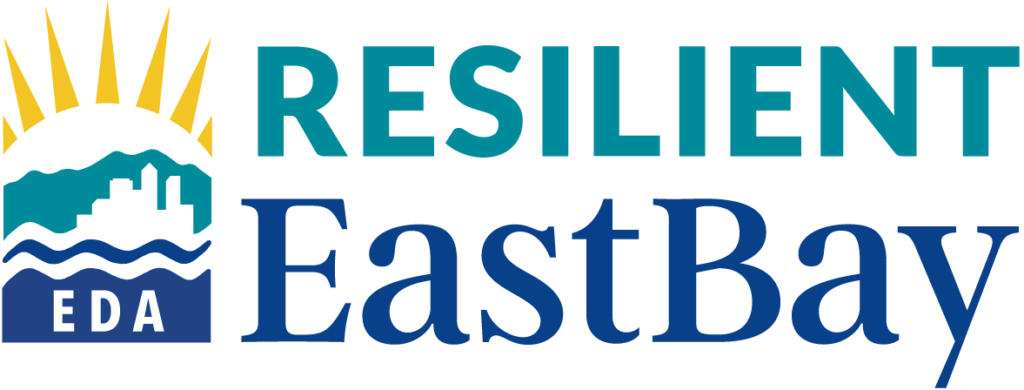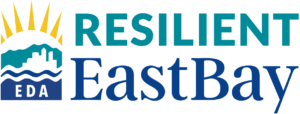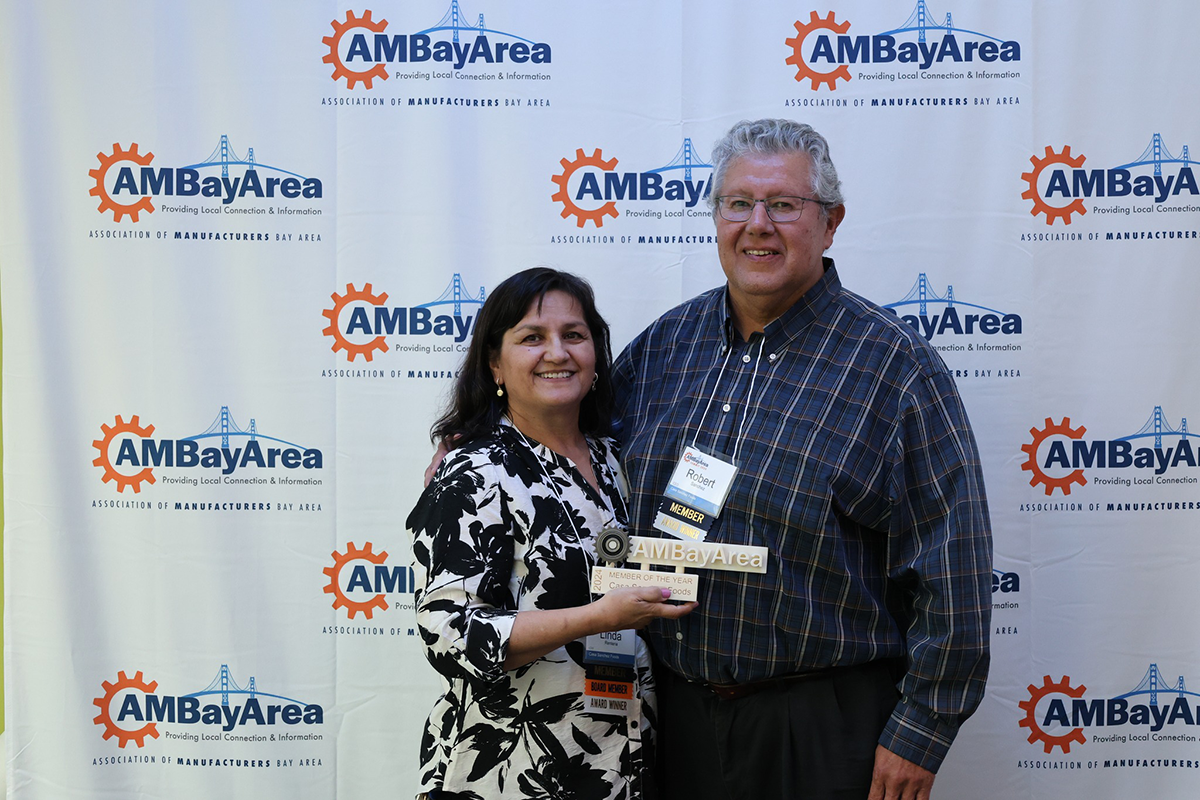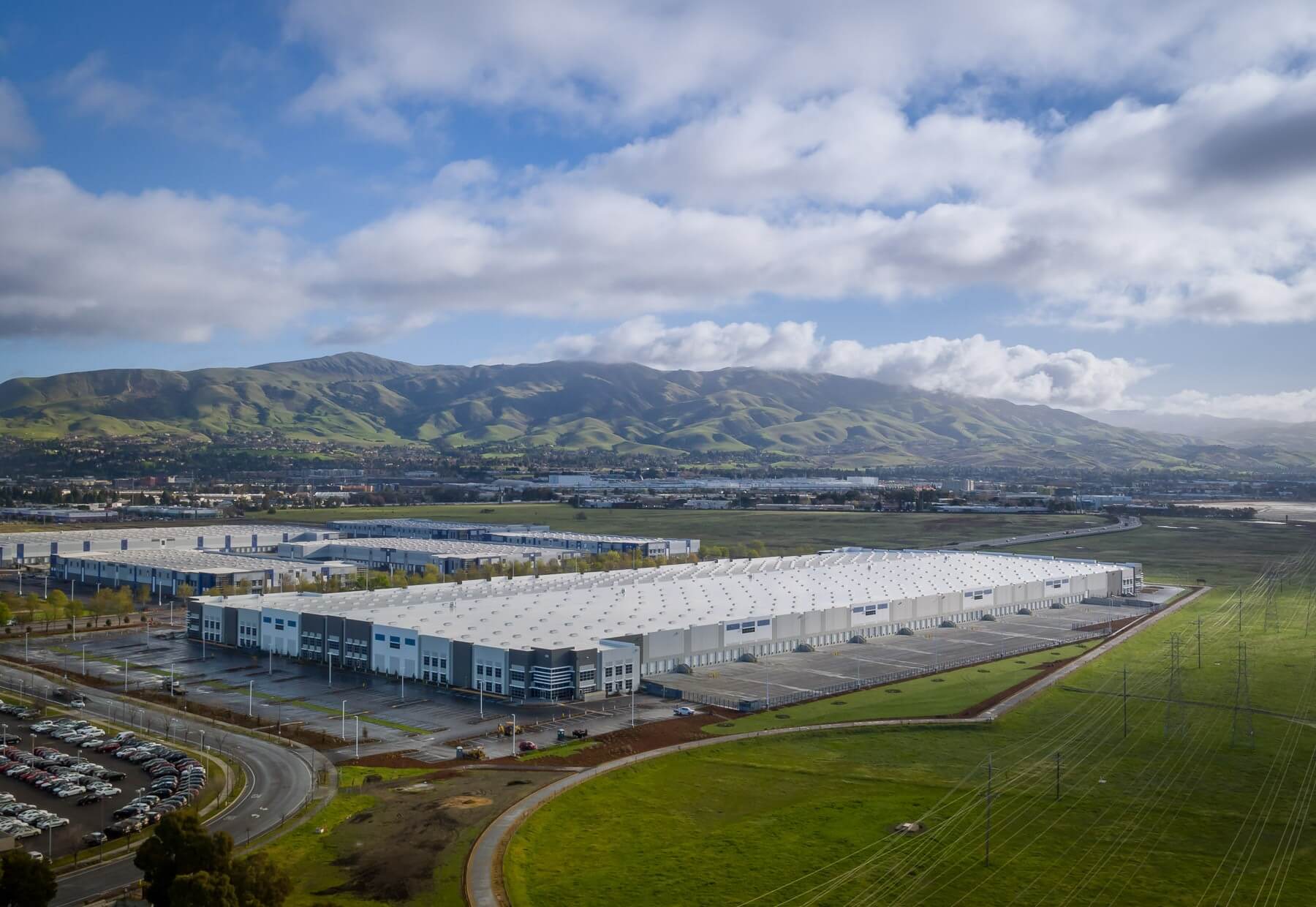REGIONAL ECOSYSTEM STRATEGIES
Broadly speaking, the three collections of strategies—Effective Business Ecosystems; Transportation & Goods Movement; and Utilities & Industrial Resilience—are designed to enable industrial businesses and cities in the East Bay to grow by matching businesses to their individual locational needs as well as facilitating this growth with appropriate infrastructure investments. While individual locational needs vary widely by business stage and industry, each business (and the East Bay’s industrial economy as a whole) can benefit from the combination of business support, transportation, and utility provision.
Today, many industrial businesses that might otherwise choose the East Bay are starting up or growing their businesses in locations other than the East Bay. The further reading section below explains why this can often happen.
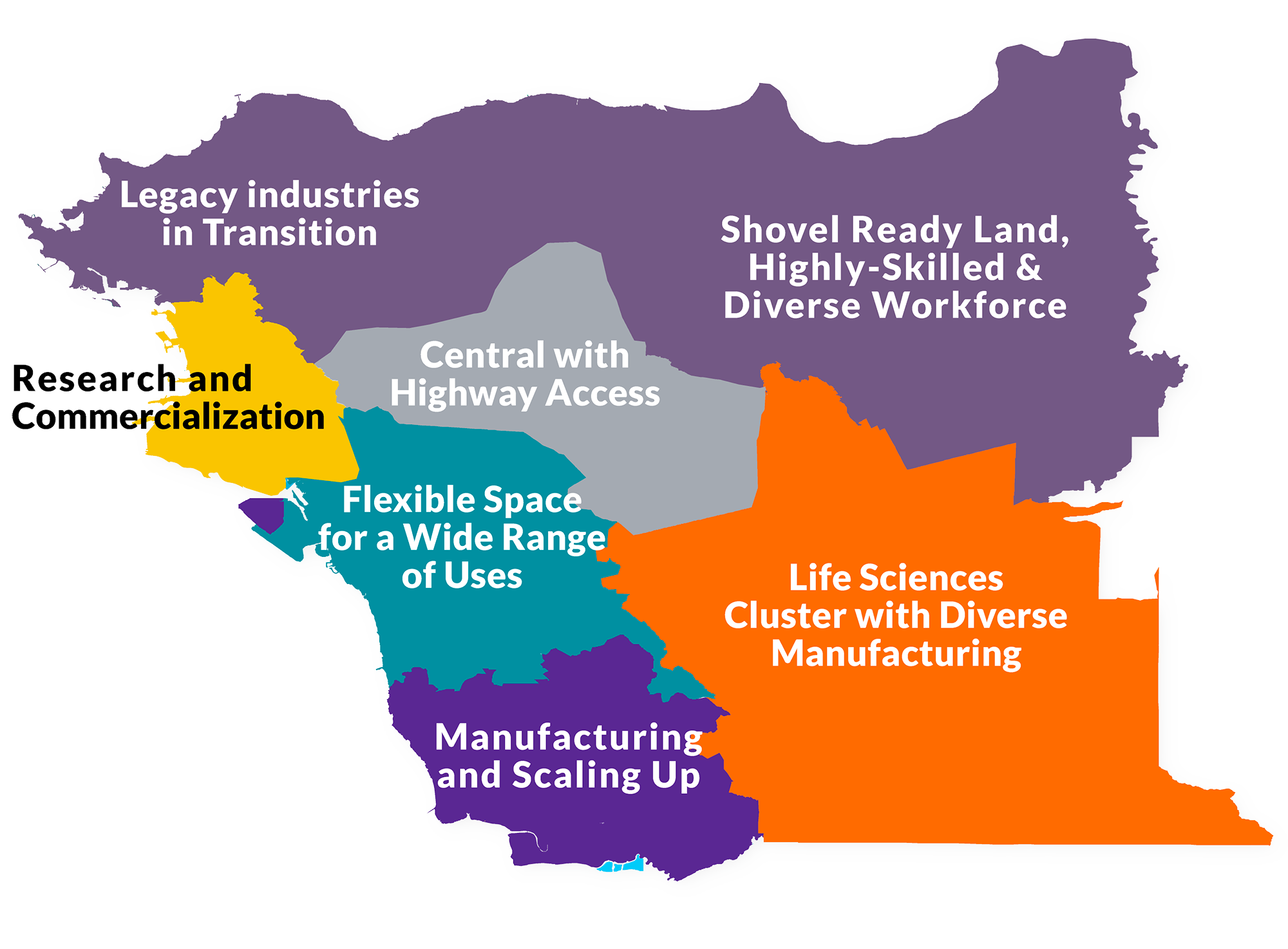
Industrial Business Types and Locational Needs
The needs and cost priorities of industrial businesses change as they grow, and these changing priorities have implications for the optimal location of each firm within the East Bay region. Startup companies are typically more focused on innovation and investment, but less focused on cost efficiency or profit until they find their footing. As these companies grow and evolve, they become more focused on increasing sales, reducing costs, operating more efficiently, and maximizing profits.
Illustration 1: Example Business Evolution and Revenue Needs Sources: Stakeholder interviews, 2023; Strategic Economics, 2023
Sources: Stakeholder interviews, 2023; Strategic Economics, 2023
Note: A company may not follow a direct path between these four phases, and a large-scale manufacturing company may still retain research and concept components to its business. However, the larger a company becomes, the more likely it is to separate functions into specialized units across locations, and even around the world.
These phases have differing implications for economic development policy, because each type of business or target industry needs different building spaces, workforce skills, and utility supplies as it moves through its businesses stages. An effective regional ecosystem will make accommodations for all stages of businesses across all types of industries, enabling them to locate optimally so that each individual business location can optimize for sub-regional competitive advantages based on both sector and business stage. Though not all industrial businesses will fit exactly into these four categories, the illustration below provides an example of each business type’s unique needs.
Illustration 2: Business Needs for Four Different Industrial Business Types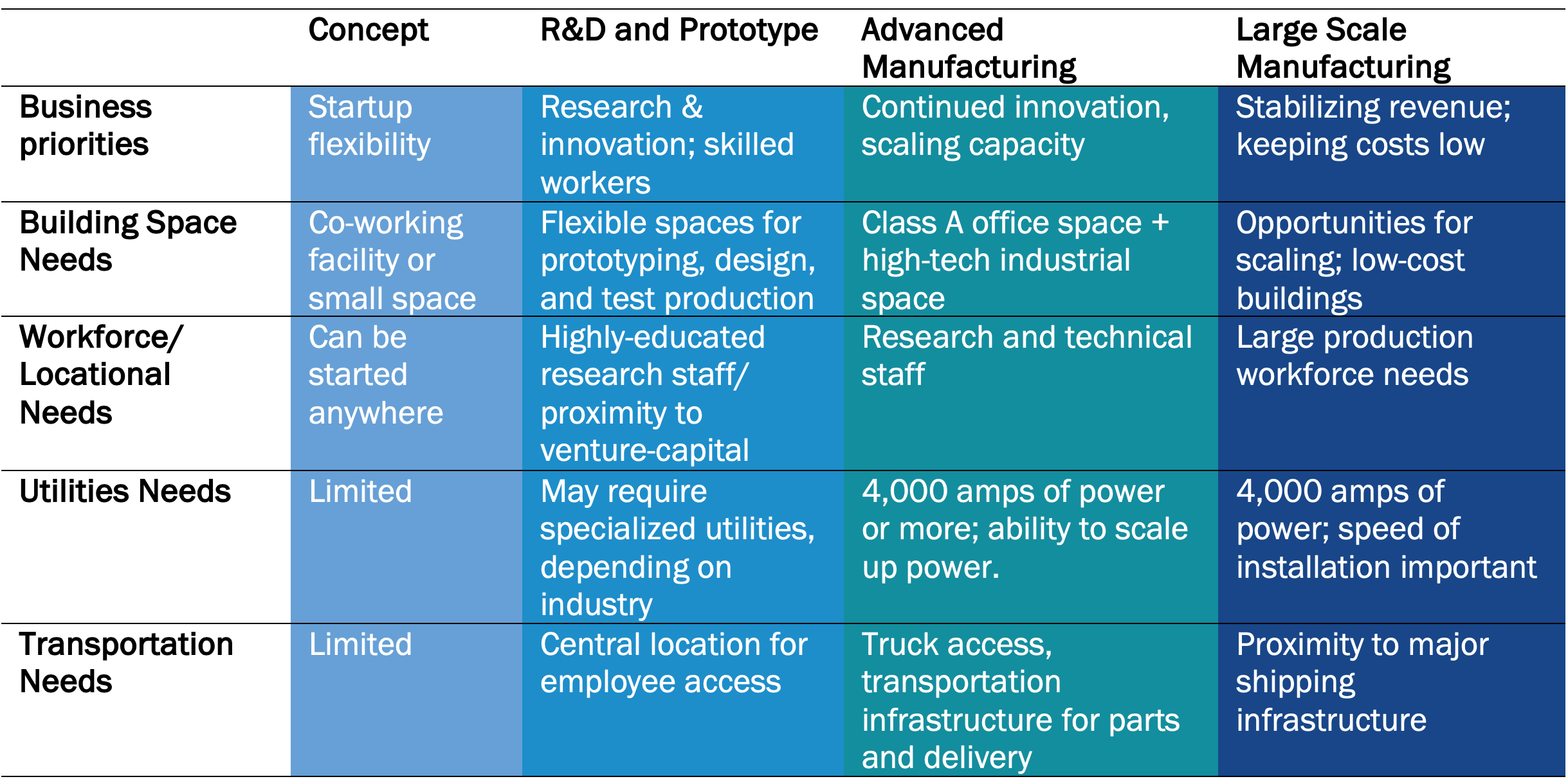 Sources: Stakeholder interviews, 2023; Jones Lang LaSalle, 2023; Strategic Economics, 2023.
Sources: Stakeholder interviews, 2023; Jones Lang LaSalle, 2023; Strategic Economics, 2023.
Note: These four business types are not meant to be representative of all industrial businesses.
Key Takeaways from Both Illustrations
- Local economic development strategies should be optimized for the combination of workforce strengths, land and building assets, and utility assets the community has.
- Intra-regional collaboration between brokers and municipalities may help retain businesses within the East Bay whose current needs are not being met in their location.
Regional Ecosystem Strategies: Creating a Collaborative East Bay
However, because the East Bay as a whole has many competitive advantages, companies are often interested in keeping manufacturing activities local if they can find the right property or cost profile to do so. In this context, having access to low-cost industrial properties, transportation infrastructure, and reliable skilled workers can make the East Bay an attractive option for all types of industrial businesses. The three collections of strategies described in this toolkit—effective business ecosystems, transportation & goods movement, and utilities & industrial resilience—provide a framework for ensuring that the East Bay can grow and retain more industrial businesses.
STRATEGY 1
Effective Business Ecosystems
Ideally, individuals would have the resources and funding support that they need to start businesses where they are. As businesses scale, local communities can help provide facilities and connections that are necessary to support continued innovation and product testing for these small local businesses so these businesses can continue to operate in the East Bay. Here are four strategies that local jurisdictions can implement to cultivate a more optimal pattern for growing businesses and keeping businesses in the East Bay.
- Invest in incubators and startup resources
- Create targeted initiatives to streamline technology transfer between small businesses, educational institutions, and research institutions.
- Collaborate to make regional investments in marketing the East Bay’s industrial assets
- Report on data and stories that help businesses identify the East Bay’s suitability for their business needs.
- Conduct ongoing industrial roundtables—meeting and talking to stay current
- Facilitate connections between economic development staff, industrial brokers, and industry leaders to identify evolving trends in business location needs and cultivate a collaborative approach within the region for helping businesses grow in complementary locations across the East Bay. This could also include joint lobbying for infrastructure investment and, as necessary, various types of policy change.
- Consider a regional ecosystem perspective when creating local economic development strategies; target industries that align with local economic advantages or workforce skills.
- Recognize each community’s unique strengths and assets within the context of the industrial economy.
- Create economic development strategies that foster a collaborative and regional approach; not every community needs to target the same industries, but every community can benefit if all jurisdictions work together to create industrial growth across the East Bay.
- Identify what types of industrial suppliers are needed to support the innovation economy in each city and across the region so that local zoning and other policies continue to support and enable economic diversity.
Port labs provides coworking resources, offices, startup support, and makerspace amenities for startup companies from its facilities in Oakland. Its combination of product design resources—such as 3D printers, laser cutters, electronics tools, and flexible space—with its small business support resources—such as U.S. Small Business Administration (SBA) funding assistance, one-on-one advising, and cohort programs—makes it attractive for high-tech companies that are working to develop physical products.
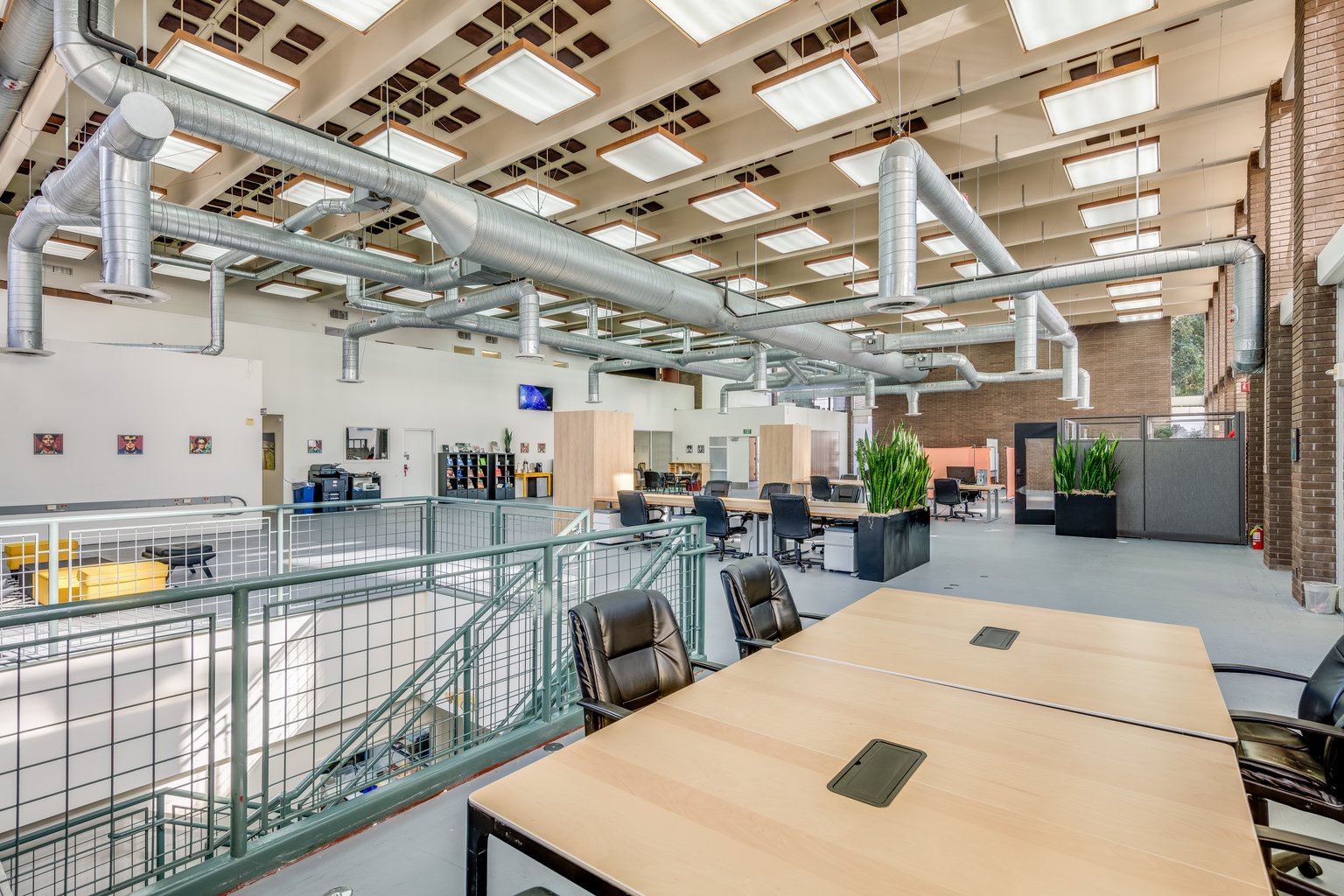
Source: Port Labs, 2023
Over time, Port Labs has developed a specialty in supporting climate tech companies, such as battery development, vehicle electrification, renewable energy deployment, energy efficiency, and methane mitigation products. Its location in Oakland makes it uniquely positioned to harness the Bay Area’s tech ecosystem while also connecting with the East Bay’s industrial assets. According to Port Labs’ Managing Partner, Sal Bednarz, many companies that scale up out of Port Labs move into their own light industrial space elsewhere in the East Bay. However, while companies are likely to retain their headquarters and research activities in the East Bay because of the talent available, companies in this industry often look to manufacture their products overseas because of cost efficiencies.
Key Takeaways
- The East Bay is uniquely positioned to provide startup support to early-stage industrial businesses. But businesses need access to both facilities and funding connections in order to develop. Local jurisdictions can be important partners for achieving both.
- Based on their locations, facilities like Port Labs can be used to create clusters of similarly-focused startup businesses. Clusters of businesses may develop naturally in each location, and need not be the same for every location across the East Bay. Local communities should focus on nurturing startups in industries that are already gaining traction in their area.
For more information:
The Fresno DRIVE initiative is a regional workforce and economic development investment plan for a five-county region. The plan calls for $4.2 billion of investment over the next ten years, and was developed through a partnership among over 150 civic, business, and community organizations in the region. Because the plan cultivated such widespread community buy-in, the DRIVE coalition was able to use the plan results to elevate the profile of its final economic development goals and attract additional state and federal funding.

Key Takeaways
- This process provides an example of what can be accomplished through collective partnership and commitment to common goals.
- The process provides an example of foundation-led efforts to convene stakeholders. Foundations can provide funding and serve as neutral parties to bring diverse groups to a common table.
For more information:
The Concord Life Science Center is a 20,000 square foot building that provides startup space and lab resources to small life science businesses. Prior to its conversion into a life science incubator, the facility was a two-story office building located in an industrial park. Its amenities include specialized labs, water systems, testing services, storage, and waste pickup services. With its location in Concord, the Life Science Center is able to provide lab space for startup companies that is more affordable and more accessible for entrepreneurs living in Contra Costa County.

Source: Concord Life Science Center, 2023
Key Takeaways
- Conversion of a 20,000 square foot small office facility into a life science incubator was a relatively straightforward process, because it was already enabled by existing zoning, and startup life science companies do not require as many specialized HVAC or other assets as a large life science company.
- The Concord Life Science Center fills a unique niche in the East Bay’s industrial ecosystem. However, as of the summer of 2023, the facility was not fully occupied, indicating that it still has room to meet growing demand.
- This is an example of how the region as a whole can benefit from having different communities target different industries, and different stages of the business cycle. As of now, an additional life science incubator may not be needed in Contra Costa County.
- Currently, the common pattern for life science businesses in the Bay Area is to relocate to the South Bay or Peninsula once they receive Series A funding. This may be due to the preferences of venture capital funders as well as the availability of PhD workforce.
For more information:
i-GATE is a non-profit organization “dedicated to building a thriving startup community in the Tri-Valley.” This initiative is a partnership between the cities of Danville, Dublin, Livermore, and Pleasanton, as well as the Lawrence Livermore National Laboratory and the Sandia National Laboratories. i-GATE has created Daybreak Labs—a life science and hard tech incubator—in addition to initiatives for supporting science startups and promote innovation-based job opportunities in the Tri-Valley for Bay Area workers. Through this and other efforts, Tri-Valley communities have been working together to market the region as an innovation center and develop the region’s innovation ecosystem.

Daybreak Labs opened in September of 2022, and provides 25,000 square feet of laboratory and R&D space for startup companies. Daybreak Labs also offers a business advisor network, and has a Kickstart program to provide selected companies with three months of free residency and low-cost legal services. Located in Livermore, it is the product of a funding partnership between the City of Livermore, Lawrence Livermore National Laboratory, and Sandia National Laboratories.
Key Takeaways
- Like the Concord Life Science Center, Daybreak Labs helps fill a niche in the East Bay’s industrial ecosystem for small R&D companies who may otherwise struggle to find appropriately-sized space among the region’s industrial inventory.
- However, i-GATE is distinguished by its inclusion of research institutions as key partners. The i-GATE initiatives demonstrate the power of partnerships between research institutions, local municipalities, and private businesses. By partnering together, these entities are marketing the Tri-Valley as an innovation center and creating a more complete ecosystem for industrial and life science businesses to thrive.
STRATEGY 2
Transportation & Goods Movement Strategies
Plan Bay Area—the Bay Area’s long-range transportation plan—focuses primarily on transit and pedestrian safety which prioritize commute trips associated office-based industries and non-work trips rather than goods movement and industrial activity. Other regional planning efforts have addressed the topic of goods movement, but most of those planning efforts have focused on facilitating national and international shipments through the Port of Oakland and the region’s major shipment hubs. Little attention has been given to moving goods within the region to support local production and distribution needs, despite these industries being critical to the region’s overall economic resilience. Incorporating goods movement objectives in future regional plans can improve regional transportation connections and ensure that goods movement needs, especially as they relate to the East Bay’s key industries are also addressed and supported with appropriate funding.
Improved planning around transportation nodes and distribution networks can also help the region use its transportation assets more effectively. The East Bay currently experiences EV charging backups near the Port of Oakland and insufficient charging resources elsewhere, as well as under-utilized water routes and airports, especially in Contra Costa County. Proactive planning to dedicate land near transportation nodes to industrial uses and target infrastructure investments throughout the region can help ensure the East Bay is able to meet growing demand and making space for value-added manufacturing activities.
The Resilient East Bay initiative has identified three primary recommendations for improving transportation and goods movement in the East Bay’s industrial lands:
- Make goods movement a top-level objective in future updates to Plan Bay Area & County transportation plans.
- Include dedicated goods movement chapters in all future transportation plans. Ensure that regional transportation planning funds are used for improving both global shipping and intra-regional goods movement beyond ports and international shipment nodes.
- Dedicate funding to improving transportation efficiency and reducing greenhouse gases: invest in non-highway modes such as water and rail; invest in alternative energy technologies; improve dedicated truck routes or multimodal transfer connections near global shipment nodes; and pilot smart operations and delivery technologies.
- Make regional investments in improving transportation efficiency in Priority Production Areas (PPAs)
- Support Contra Costa as a key regional job growth destination, with transportation and technology investments to enable efficient transportation and reduced commutes
- Support pilot programs to test new technologies and last-mile delivery systems that better use regional airports.
- As part of the next Plan Bay Area, evaluate the freight transportation improvements needed to encourage job growth in Contra Costa County and reduce commute miles as well as to facilitate reusing legacy industrial lands to support intra-regional economic growth so that businesses can evolve and mature without having to leave the East Bay.
- Provide investment and planning support in Contra Costa County for freight electrification programs
- Evaluate the long-term value of transportation investments in alternatives to trucking, such as marine highways, regional airports, and intra-regional rail.
- Align land-use planning with transportation planning to improve transportation efficiency and facilitate greenhouse gas reductions in Alameda County.
- Prioritize lands in close proximity to ports, airports, rail nodes, and interstate exchanges for industrial land uses, including logistics-related uses. Strengthen restrictions on land use conversions, especially to housing, in these areas. Also target these areas for infrastructure investments, to facilitate more efficient goods movement and modal transitions.
- Focus regional planning and investments on green energy transition needs, such as creating space for EV charging infrastructure.
- Create space in the industrial ecosystem for all building and use types needed to facilitate intra and inter-regional goods movement.
- Recognize that distribution services play a vital role in enabling the existence of the advanced manufacturing facilities that so many communities desire. Allow land-use flexibility for building uses to transition over time and industrial ecosystems to evolve over generations.
Jones Lang LaSalle has published a series of white papers to help communities understand what is needed to grow advanced manufacturing businesses in the Bay Area and throughout California. One of these white papers is Within the Walls, which provides a review of the connections between advanced manufacturing businesses and their transportation and distribution needs. These connections are perhaps best summarized by the following quote from the white paper:
“Manufacturing does not exist in a vacuum, and the production of goods involves linkages with other economic sectors. Manufacturers rely on suppliers to bring in components, which in addition to requiring warehouses to store the goods, creates jobs in sectors outside of the manufacturing operation itself. Further, advanced manufacturers create forward linkages where employees spend their income in the service sector, creating more jobs.”
The white paper also explores how similar-looking building shells can be used for a wide variety of activities, from warehousing, to last-mile distribution, to advanced manufacturing. Each of these buildings can be used to inject capital into the local economy, and provide jobs for local residents, and all are part of the industrial ecosystem that allows advanced manufacturing businesses to thrive. The white paper recommends that all industrial actors—developers; municipalities; and businesses or occupiers—must work together to create a flourishing industrial ecosystem.
What to Look At:
- Case study of South San Francisco
- This section reviews how South San Francisco’s industrial lands have transformed over the course of a century, from meatpacking, to brickmaking and paint manufacturing, to cable manufacturing and biotechnology. The emphasis of this section is that the use of buildings can evolve over time, but that transformations of an entire business ecosystem is a gradual process.
- What’s Inside
- This section compares industrial buildings based on their interior activities, building specifications, traffic levels, labor requirements, power requirements, and capital expenditures.
- Being a good neighbor
- This section describes how goals and challenges vary for different actors within the industrial ecosystem. Each actor can benefit by recognizing the challenges of others, and helping to eliminate barriers to shared regional prosperity.
View this Case Study: https://hello.jll.com/advancedmanufacturing

As part of Connect SoCal—the Southern California Region’s transportation plan from 2024 through 2050—the Southern California Association of Governments (SCAG) created a Goods Movement Technical Report. This technical report outlines a vision for freight transportation in the Southern California region and embeds goods movement investments into the overall plan framework. The report outlines how the region’s economy is dependent upon goods movement for its success and lays out a vision for goods movement that contributes to economic vitality, clean air, and quality of life. In addition to providing a thorough overview of the region’s goods movement system and trade networks, the report compiles goods movement strategies for seaports, rail, highways, and environmental and technology advancement.
What to Look At
- Study Highlight Areas (pages 7and 35)
- The report includes sidebar discussions on workforce development and last-mile freight, among other topics. These discussions highlight ongoing challenges in the region, and SCAG’s efforts to solve these challenges for effective goods movement.
- Goods Movement Environmental Strategy and Technology Advancement Plan (page 63)
- Outlines a phased approach for evaluating, testing, and deploying new technologies to achieve a zero emissions goods movement system.
- Appendix on Near and Long Term Zero and Near-Zero Emissions Technology Opportunities for Trucks and Rail (page 125)
- This appendix provides a technical overview of existing and potential emissions reduction technologies for both trucking and rail transportation.
- For each technology, the appendix discusses the extent to which it has already been implemented as well as constraints or remaining barriers to further implementation.
View this case study: https://scag.ca.gov/sites/main/files/file-attachments/0903fconnectsocal_goods-movement.pdf

The Seattle Industrial and Maritime Strategy combines policy recommendations with updated land use protections to preserve and promote industrial activity in waterfront areas near transportation nodes. The strategy, created in 2023, protects industrial lands by closing loopholes for zoning conversions, increasing the threshold at which industrial uses could be converted, and prohibiting new residential developments on industrial lands. In particular, the plan establishes a new industrial zoning category—Maritime Manufacturing and Logistics (MML)—which places a particular emphasis on protecting lands near rail or freight infrastructure, deep-water ports, and existing industrial suppliers.
This combined framework for protecting industrial lands near transportation nodes can make future freight transportation investments more effective. Initial implementation of the Industrial and Maritime Strategy has focused primarily on land use changes, but the City’s Office of Planning and Community Development is partnering with the Seattle Department of Transportation to carry out transportation elements of the strategy. The City of Seattle released a Freight Master Plan in 2016, and is including a Freight and Urban Goods Movement element in its updates to the Seattle Transportation Plan.
What to Look At
- Communities face tradeoffs between protecting industrial land and enabling growth and development of other uses. Through its suite of industrial zones, the Seattle Industrial and Maritime Strategy allows for the densification of industrial development near public transit, while limiting encroachment into industrial areas from residential uses.
- The strategy also includes amendments to noise regulations to support industrial activity. This can be an important component of industrial protection—as noise complaints can lead to the elimination of industrial activity, even in cases where zoning allows those activities to occur.
View this Case Study (PDF): https://www.seattle.gov/documents/Departments/OPCD/OngoingInitiatives/IndustrialMaritimeStrategy/IndustrialMaritimeFinalDirectorsReport2023.pdf
From 2019 to 2022, the South Coast Air Quality Management District and Volvo Trucks partnered together with 12 other Los Angeles area organizations to deploy electric trucks to move goods from the Ports of Los Angeles and Long Beach throughout the region along designated trucking routes. Called the “Volvo LIGHTS” project, the partnership included two fleets of battery electric trucks, a network of private charging infrastructure, truck technician training programs, and first responder safety education. The local utility—Southern California Edison—and the University of California Riverside analyzed the impacts of electric trucks to the grid and analyzed impacts on local communities.

Key Takeaways
- Cross-sector partnerships were crucial to the success of the demonstration. The project partners included local and regional governments, private trucking and maintenance companies, education institutions, ports, and utilities.
- Training should be extended not just to truck technicians, but also to fleet managers, truck drivers, first responders, charging station technicians, and utility companies.
- Businesses looking to deploy electric trucks should engage utilities, charging station providers, and local permitting authorities as early as possible.
For more information:
STRATEGY 3
Utilities & Industrial Resilience Strategies
Successful industrial businesses require electricity, water, and often gas or other utility inputs to conduct their operations. It can be a lengthy process to get electricity hookups from PG&E, and other utility installations may be more time-consuming or require more approvals than developers from out of state are used to. This can be a major sticking point for businesses, preventing their expansion or causing them to locate in other regions.
At the same time, industrial land and utility policies have significant implications for energy use, pollution, environmental justice, and inclusive workforce development. Cities and regulatory agencies have a responsibility to their citizens and workers to adapt their economies to be cleaner, safer, and more environmentally resilient. This is particularly true for communities whose residents have long suffered environmental injustices. These needs require East Bay communities to work collaboratively and creatively—to pioneer a more just industrial ecosystem.
The four strategies identified below can help local East Bay communities ensure more efficient energy usage, enhance environmental justice, and improve partnerships with utility providers. Cities can help streamline utility processes by working directly with utility providers in their project plans, educating developers about utility needs, and advocating collectively for state-level policy improvements to increase the efficiency of PG&E. With proper planning, cities can also use these partnerships to advance environmental equity—working to utilize cleaner power sources, minimize pollution, and accounting for equity in industrial land use planning.
- Establish a formal regional industrial advocacy function.
- Track key legislation for industrial lands, advocate for legislative change and support related to power installation and energy transition, participate on state committees, and partner in advocacy with other regional economic development organizations.
- This advocacy entity may initially be focused primarily on utility issues, but could also track and respond to other industrial challenges as issues arise.
- Cultivate ongoing and proactive engagement with utilities to ensure capacity and effective planning in industrial areas for water, power, EV charging, and air quality needs.
- Engage utilities such as PG&E, the Bay Area Air Quality Management District (BAAQMD), and/or others as early as possible in general plan processes and district planning processes to identify anticipated new capacity needs and potential planning improvements.
- Form partnerships and ongoing conversation with utilities to make processes more efficient, identify advocacy opportunities, and plan for sustainability transitions.
- Develop standardized referral, engagement, and approval policies to streamline utility installations, air quality permits, and educate developers and brokers.
- Integrate external utility and air quality requirements into city policies and standards to make development requirements clear.
- Develop educational materials to help developers and businesses understand approval and installation requirements, and identify contacts at utilities earlier in the development process.
- Consider environmental justice and a neighborhood or community’s history of air pollution burdens when crafting industrial pollution standards and making land use decisions about heavy industrial activities.
- Include environmental justice elements in general plan documents.
- Engage community members and community organizations in land use planning processes to identify community needs and challenges as it relates to industrial lands.
- Concentrate energy efficiency, pollution mitigation, and sustainable transition efforts on communities who have experienced environmental injustices.
The City of Vacaville has long been home to biomanufacturing activity. However, in recent years, the City has orchestrated a combination of utility planning, educational partnerships, and economic development efforts that have rapidly amplified its reputation as a biomanufacturing hub. The story of these investments illustrates how progressive utility planning can layer with existing community strengths and intentional economic development efforts to grow an industry cluster. Vacaville’s biomanufacturing cluster draws upon existing strengths of the Solano Community College’s Biotechnology Program, Vacaville’s water rights for Lake Berryessa water, and strong transportation assets. On top of these strengths, the story of Vacaville’s engagement with PG&E, the City’s dedication of 300 acres of industrial land, and its engagement with industry leaders illustrates how local economic developers can improve conditions for businesses to prosper through forward thinking and progressive planning.

Source: City of Vacaville, 2023.
The City’s recent efforts to amplify its biotechnology cluster go back as far as 2017. Solano Community College had just launched a Biomanufacturing degree, and the City was starting to think about its utilities infrastructure for growing a manufacturing center. Over a five-year period, the City worked proactively to build the backbone utility infrastructure in advanced; and worked with PG&E in iterative conversations to plan for and prepare for electricity needs. The City gathered initial input from PG&E about the extent of current electricity capacity. As the City was developing a biotechnology strategy from 2018 through 2020, they hired private contractors who had worked for life science firms to provide real-world estimates of the electricity capacity that would be needed on prospective properties. Vacaville brought these figures to PG&E’s economic development incentive team along with an expected implementation timeline—allowing PG&E to create long-term plans for the investments that would be needed to bring new companies online.
At the same time, the City was holding focus groups with representatives from biotechnology firms in South San Francisco and Fremont. Through these focus groups, the City identified a unique niche for biomanufacturing that could be attractive in Vacaville, due to the availability of water resources, Vacaville’s workforce strengths and educational assets, Vacaville’s cheap land, and its transportation assets. However, the companies expressed a need for a support system for biomanufacturing activities—since most Peninsula-based biotech organizations focus primarily on the research and development aspects of life science. Thus, the City created the California Biomanufacturing Center—a nonprofit industry organization that provides workforce and training support.
Key Takeaways
- Be “aggressively proactive” in planning for and preparing for utility needs
- Talk to PG&E early and often
- Through a series of conversations, Vacaville was able to work with PG&E through the planning process and begin the process early for meeting those needs.
- Vacaville provided PG&E with real-world estimates of needed capacity, and engaged PG&E early when they received interest from investors in a site.
- Invest in backbone infrastructure in advance so that the back-end development process goes more quickly.
- By building the backbone utility infrastructure upfront instead of requiring developers to build to their sites, the City was able to shave up to two years off the development timeline.
- The City still asks developers to pay for their share of infrastructure costs—meaning that there is little long-term difference in overall costs to the City, but developers benefit from time savings.
- Know your strengths and play to them
- Vacaville knew that it had a specialized community college program, strong water rights, and good transportation options. The City worked to leverage these strengths by working aggressively to anticipate challenges with PG&E.
- Vacaville recognized that its assets—cheap land, a technical community college, affordable housing, and water resources—lent themselves particularly to the biomanufacturing portion of the life science sector, and was able to invest specifically in meeting that sector’s needs.
- Talk to businesses who are your intended investors.
- The City held focus groups of life science businesses based out of South San Francisco and Fremont. Through this, they identified a need for a biomanufacturing support organization. They created the California Biomanufacturing Center to provide resources specifically for this sector.
- Talk to PG&E early and often
For more information:
The Bay Area Air Quality Management District regulates stationary sources of air pollution in the nine-county Bay Area region. When new stationary pollution sources are being proposed—such as a new industrial development, or a change in industrial uses or activities at a particular location—developers or business owners must work with BAAQMD directly to obtain an air quality permit. In addition, projects located in environmental justice communities require additional public notice and must meet stricter requirements for emissions. While these standards provide important protections for East Bay residents, the permitting process can be time-consuming and confusing, particularly for those who have not been through it previously. BAAQMD recommends that cities refer developers to them as early as possible in the development process—particularly for out of state developers who may not be acquainted with California’s air quality requirements.
With its recent General Plan Updates, the City of Oakland engaged BAAQMD to help them clarify air quality standards in their industrial districts and improve environmental justice outcomes.
What to Look At:
- Section 17.103.065 in the City’s General Planning Code Amendments (page 21): reflects recent zoning code amendments for performance standards on truck-intensive industrial activities.
- These standards provide clarity on compliance standards and direct industrial users into alignment with BAAQMD standards.
- Oakland’s General Plan, Environmental Justice Element, which discusses issues such as environmental racism, pollution disparities, health, and housing quality, and food access. The section on pollution in particular illustrates connections between industrial land uses, pollution, and a history of racially discriminatory practices that expose BIPOC and low-income communities to greater health risks. Examples of policy initiatives include:
- Partnerships between BAAQMD and community organizations to develop emissions reduction plans;
- Targeted urban greening and air filter deployments to improve air quality; and
- Considering environmental justice in land-use decisions, to limit air quality burdens.
For more information: https://www.oaklandca.gov/topics/general-plan-update
The City of Richmond is in the process of creating a Green-Blue New Deal Workforce Development Plan. The goal of the project is to “catalyze” at least 1,000 new green-blue jobs for Richmond residents that build a just, equitable, resilient and sustainable future.” The workplan will identify projects, workforce training, and business growth opportunities related to the city’s green and blue economy. More specifically, the plan’s goals are to help Richmond transition to renewable energy; decarbonize its transport, building, and waste systems; create more sustainable use of ocean resources; and advanced ocean and shoreline ecosystem restoration.

Key Takeaways
- As East Bay communities pursue energy transition, new patterns must emerge for both their current industrial workforce and their use of industrial lands for energy generation.
- The plan seeks to advance projects related to transportation systems, use of the waterfront, building electrification, and energy generation that can have applications for existing industrial businesses within the region.
- Utilities in the East Bay are also mindful of the need for energy transition. For example, Marin Community Energy (MCE) is pursuing apprenticeship training and certifications to help transition high-wage energy jobs into the next phase of energy generation. MCE and utilities like them can be partners for local communities developing new workforce training resources.
For more information: https://www.ci.richmond.ca.us/4138/Green-Blue-New-Deal-and-Just-Transition
